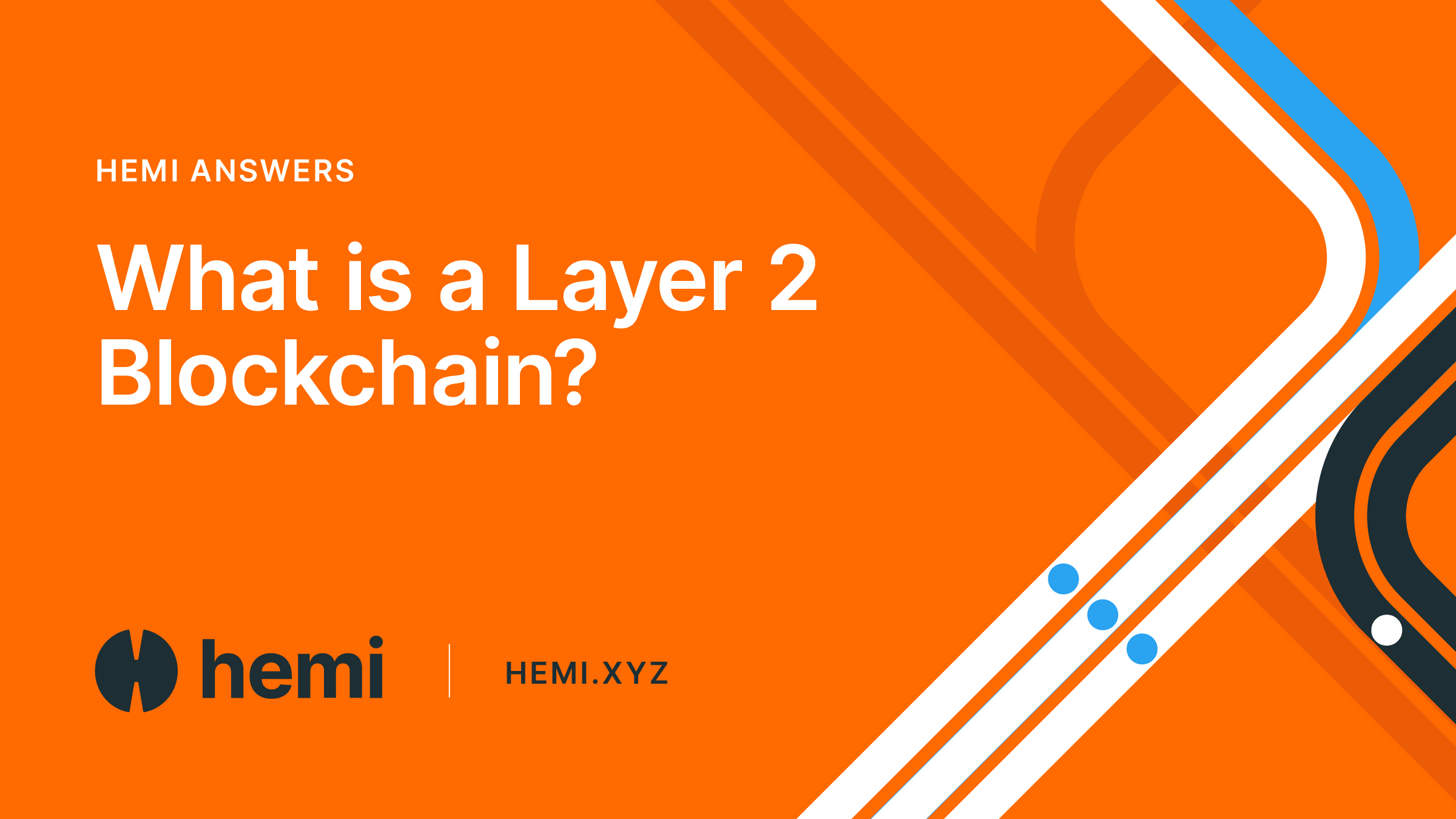- Bitcoin
- Ethereum
- Learn Center
- July 11, 2025
What Is a Layer 2 Blockchain?
Layer 2s solve a lot of problems that Layer 1 blockchains can’t.

Layer 2 blockchains are critical to scaling public blockchains like Bitcoin and Ethereum. As demand grows, Layer 1 networks face congestion, high fees, and limited throughput. Layer 2s solve this by offloading computation and bundling transactions before sending them back to the base layer.
This guide explains what Layer 2s are, how they work, and why they matter for the future of decentralized applications.
Layer 1 vs. Layer 2: The Basics
A Layer 1 blockchain (L1) is the base protocol. Bitcoin and Ethereum are both L1s. They offer security, consensus, and data availability. But they’re limited in how many transactions they can process.
A Layer 2 blockchain (L2) sits on top of an L1. It handles most activity off-chain but inherits final settlement and security from the underlying network. L2s increase speed and reduce cost while preserving decentralization.
Why Layer 2 Exists
L1 blockchains weren’t designed for high transaction volumes. For example:
- Bitcoin processes ~7 transactions per second (TPS)
- Ethereum handles ~15–30 TPS, depending on network conditions
That’s not enough for mainstream use.
L2s improve performance by:
- Bundling hundreds or thousands of transactions
- Compressing them into a single data submission
- Settling the result back on the L1 chain
The result: faster apps, lower fees, and more users—all while keeping the base chain secure.
Types of Layer 2 Blockchains
There are several Layer 2 models, each with tradeoffs:
Rollups
Rollups process transactions off-chain and submit compressed proofs or data to the L1. Two main types:
- Optimistic Rollups assume transactions are valid unless challenged.
- ZK Rollups use zero-knowledge proofs to prove correctness upfront.
Rollups are popular on Ethereum and are being adapted to Bitcoin.
State Channels
These allow parties to transact off-chain and only settle the final result on-chain. Lightning Network is the best-known Bitcoin example.
Validiums
Similar to ZK rollups but store data off-chain. Validiums trade data availability for lower fees.
Sidechains
Sidechains run parallel to L1 chains but have separate consensus mechanisms. They don’t inherit L1 security, which makes them less trust-minimized.
How Layer 2s Anchor to Layer 1
L2s stay secure by anchoring to L1 blockchains. This happens through:
- Periodic state commitments (e.g., Merkle roots)
- Fraud proofs or validity proofs
- Bridge logic for asset transfers
For Bitcoin, L2s use tools like:
- Taproot commitments
- OP_RETURN metadata
- Cross-chain signatures or threshold schemes
Ethereum rollups use smart contracts to manage bridging and settlement directly on-chain.
Benefits of Layer 2 Blockchains
Layer 2s offer several core advantages:
- Scalability: More transactions without sacrificing decentralization
- Lower fees: Batching reduces gas costs
- Speed: Near-instant confirmation times
- Composability: Many apps can interoperate off-chain before settling to L1
This makes L2s ideal for gaming, DeFi, NFTs, and enterprise applications.
Hemi: A Bitcoin Layer 2 With Modular Design
Hemi is building a Layer 2 blockchain that scales Bitcoin without compromising trust. Unlike Ethereum-style rollups, Hemi uses a modular Proof-of-Proof consensus system, custom execution via the hVM, and secure cross-chain tunnels to enable trust-minimized DeFi and app development on Bitcoin.
Key features:
- Bitcoin settlement without bridging assets away from L1
- High throughput with low fees
- Programmable environment built for developers
Hemi offers a Layer 2 framework tailored to Bitcoin’s design and values.
Layer 2 blockchains are essential for scaling decentralized systems. They unlock new capabilities without overloading the base layer. While Ethereum and Bitcoin take different approaches, both ecosystems depend on L2s to grow.
If you’re building or using decentralized apps, understanding Layer 2s is no longer optional. It’s core infrastructure.